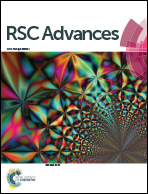Fabrication of micro-optical elements on curved substrates by electrostatic induced lithography
Abstract
This article reports the fabrication and characterization of polymeric micro-optical elements on curved substrates using electrostatic induced lithography. Unlike previous studies focusing upon the pattern formation on planar substrates, we have extended this process by adding it to the micro-transfer molding process to obtain micro-optical elements like diffractive grating and microlenses on curved substrates with aspect ratio greater than 4 : 1. The optical test results of the fabricated micro-optical elements show a slight deviation from theoretical values due to the effect of the curved surface. In comparison with previous reported methods, e.g. laser direct writing or the capillary force lithography method, the method proposed here is faster and more flexible. More importantly, microstructures with high aspect ratio can be easily obtained, which is normally difficult for the two methods reported previously. Therefore, this technology can be used as an effective method for the fabrication of such components with microscale or even nanoscale feature size on curved surfaces.


 Please wait while we load your content...
Please wait while we load your content...